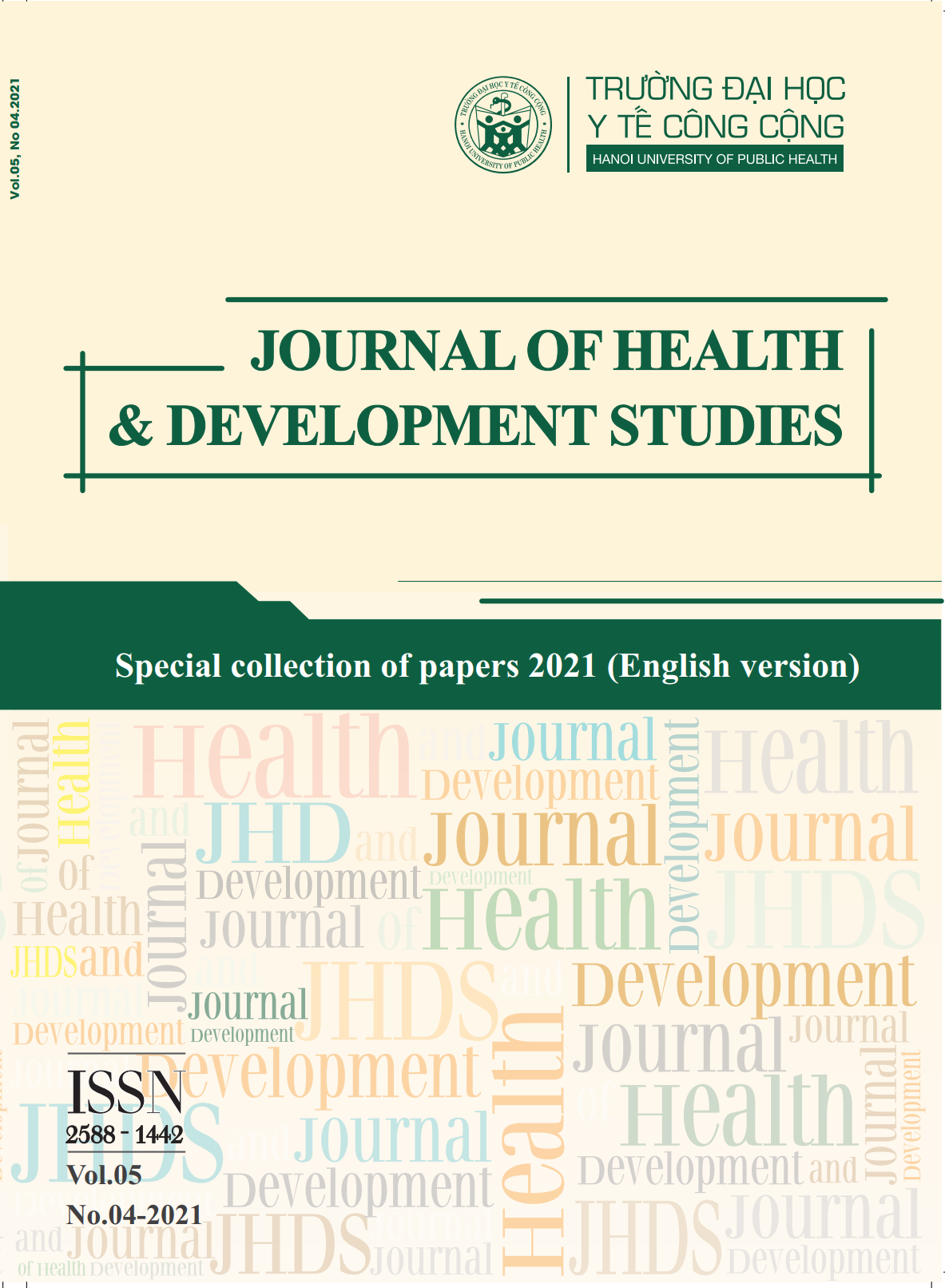People’s access to information and the practice of COVID-19 prevention during the first lockdown period in Hanoi in april, 2020
Tóm tắt
Objectives: To describe people's access to information and the practice of COVID-19 pandemic prevention during the first lockdown in the period from 7thto 30th April.
Methods: A descriptive cross-sectional study was conducted among 319 subjects through a convenient sampling procedure. Online self-administered questionnaires through social networks including Facebook, Zalo, etc were used. Descriptive statistics were used to present the data using mean, frequency and percentage.
Results: The most popular information channels which people in urban and rural areas regularly accessed for COVID-19 related information were television and radio (55.6% and 72.7% respectively). The sources of information that the highest percentage of people accessed was the Government's /Ministry of Health’s SMS, followed by social media. People were most interested in searching for information about "Evolution of the epidemic COVID-19" and the least interested in the information about "Prevention according to folk beliefs and methods”. Proactive prevention practices were well implemented during the first lockdown such as "Wear a mask properly" with 99.1%, followed by "Minimize going to the street except in necessary cases" (98.8%) and "Stop non-urgent activities, work from home when needed" with 98.8%. The proportion of people who practiced "Clean the surface of objects with an antiseptic solution" was the lowest at 87.5%.
Conclusion: Mass media and the Government information source are regular users to access information by respondents. Therefore, the information channel and source should be taken into account for health education in general and Covid -19 prevention in particular.

